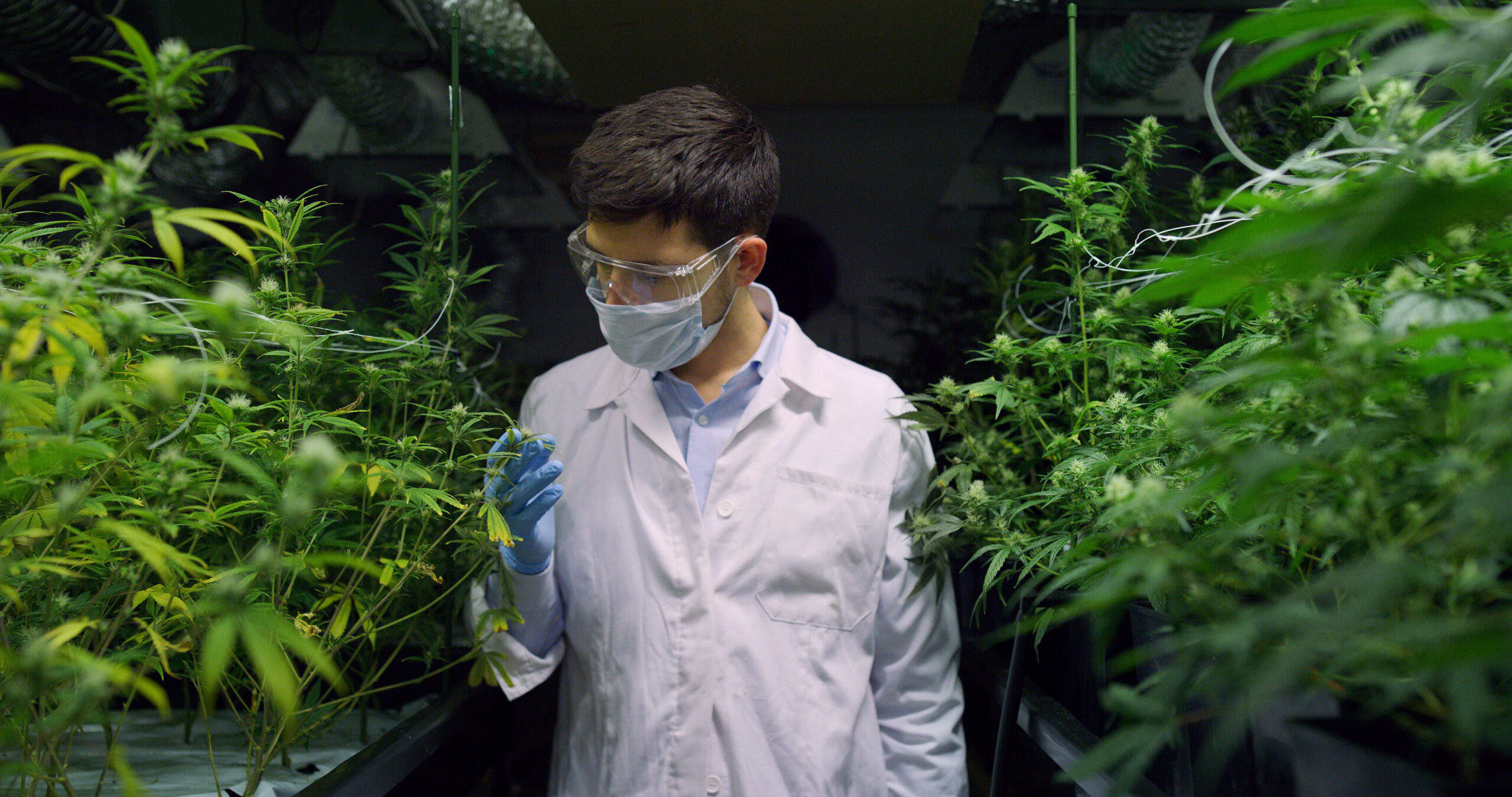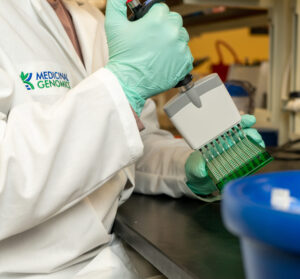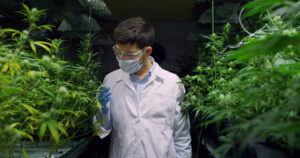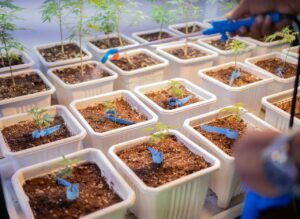Step One
Acquiring cannabis-related permits and lab certifications
Navigating local, state, and federal regulations
Securing lab insurance
Step Two
Building The Lab
Location and facility setup
Picking a proper location and establishing the proper layout will ensure an efficient analytical laboratory operation. Mistakes are exponentially more costly to fix after laboratory operations have begun, so it’s best to address them early in the planning process.
Mistakes early cannabis labs have made include, but are not limited to:
- Choosing a location too close to a school
- Choosing a location that is inaccessible to lab suppliers (gas tanks, standards, chemicals, client samples, etc),
- Choosing a location with inaccessible access to the wet laboratory (no loading dock, secure external lab exit, etc)
- Improperly choosing a layout (improvised, copied from another laboratory such as manufacturing, etc).
Equipment procurement
Analytical instruments are the fundamental tools that cannabis labs use to provide their services to clients.
We have seen many labs make mistakes when purchasing lab equipment, such as buying:
- low-cost instruments that have insufficient sensitivity for the analysis needed
- high-cost instruments that have a sensitivity that exceeds what is needed
- Inappropriate instruments, consumables, or other materials that are not truly helpful for the services the testing the lab needs to perform
Vetting any purchase order is a necessary step that can cost a fraction of mark-up costs. We have seen major instrument vendors overcharge customers more than $100,000 for a single instrument (i.e., selling a GC-MSMS for $350,000 to perform an analysis that could be done with a $100,000 GC-MS).
Hiring skilled technicians and lab personnel
An experienced cannabis laboratory director or similar is needed to vet candidates and directly assess familiarity and competency with routine analytical laboratory procedures and tasks. Many chief operators and their subordinates often come from pharmaceutical, agriculture, or environmental testing but lack experience in cannabis laboratory operations. This is compounded by the large number of cannabis laboratory technicians who have learned their job skills on-site at early cannabis testing labs, many of which were not compliant and therefore passed on unsustainable work habits.
Step Three
Establishing Testing Protocols
Developing Standard Operating Procedures (SOPs)
Developing SOPs (a.k.a. method development) and validation are the core areas where our team has assisted new labs since our group’s founding.
Developing strong SOPs is less of an issue in pharmaceutical, agriculture, and environmental labs because nearly all methods are standardized in those settings. Standardization means that public, sometimes government, agencies validate a version of an analytical method and make the SOP publicly available. Individual labs need only replicate the published procedure and show equivalent results, sometimes called a verification. This significantly lowers the labor burden on the individual lab.
Unfortunately, cannabis labs have to develop their methods independently, a task requiring a much deeper level of knowledge and skill than simply operating a compliant method. Once a method is developed, labs must perform a validation, proving to the regulating authority, often the state government, that the method produces reasonably accurate data.
A validation is a formal experiment where the lab performs a series of tests on known samples to generate data that is compared with the known values of the sample to quantitatively measure the accuracy of the method. Many components of this validation establish ongoing laboratory quality control (LQC) samples that prove the accuracy of the lab on an ongoing basis with their regulatory body. LQC samples are often the key records that are examined in a laboratory audit.
Lab accreditation process (ISO 17025, etc.)
ISO 17025 is the international standard for laboratory analysis and many states require it to operate a testing laboratory. ISO stands for International Standards Organization, and regulates manufacturing among other things beyond laboratory analysis.
Accreditation of an independent testing lab is not done by ISO but rather by their accrediting bodies. Perry Johnson (PJLA) dominated cannabis lab accreditation in the early years, but the American Association for Laboratory Accreditation (A2LA) and ANSI National Accreditation Board (ANAB) have become more common.
Earning ISO 17025 accreditation for cannabis testing labs is not equivalent to an audit provided by a regulating authority. In the agriculture and food testing sectors, the FDA performs audits as a direct regulatory authority, separate from the accreditation performed by an ISO body for 17025. In cannabis testing, this role is moved from the FDA to the local state authority. As a result of this, some in the cannabis sector assume that ISO 17025 is equivalent to a regulatory audit.
ISO 17025 is much closer to a paper-trail compliance system with components of data availability, record keeping, and data validation, albeit to a smaller degree than direct regulatory audits. This subtle difference sometimes gives folks in the cannabis industry the false impression that ISO can catch inaccuracies in the data based on error or operator fraud; however, that is outside the ISO scope and instead falls under the regulatory authorities’ lab audits.
Ensuring accuracy and reproducibility in results
Labs must demonstrate ongoing quality assurance/quality control (QAQC) program compliance through proper LQC’s as defined in the original validation report.
This is typically done using matrix blank materials (i.e. organic hemp) that are used as proxies for true samples. This must be repeated per batch analyzed by the lab on an ongoing basis as part of the lab’s QAQC program (internal) and state compliance (external). Independent certified reference materials (CRM) that are ISO 17043 accredited by their manufacturer are needed for ISO 17025 compliance in a given validation. The larger number of independently manufactured CRMs the stronger the weight of the validation results in assessing the accuracy of a given analytical method.
Validations are easily the most complex part of a laboratory and the choke point with respect to certification, accreditation, and litigation. As these are high-consequence events in the life cycle of any business, particularly an analytical laboratory, they merit discussion in a deeper and more technical perspective.
About the Author
Marco Troiani & Debby Goldsberry
Digamma Consulting, a pioneer in cannabis lab testing, has seamlessly merged innovation with expertise. We transcend traditional consultancy models, embodying a collective force dedicated to driving safety and lab profitability in the cannabis industry. Since 2011, we’ve been a leading player in cannabis laboratory consulting, delivering unparalleled solutions to clients in 50 testing labs across 18 U.S. states and four foreign countries.
In our extensive experience setting up, validating, and licensing cannabis testing labs, we have seen all of the challenges and roadblocks that testing labs face. Here we have summarized the major steps necessary for opening a licensed and profitable cannabis testing lab in the United States.









